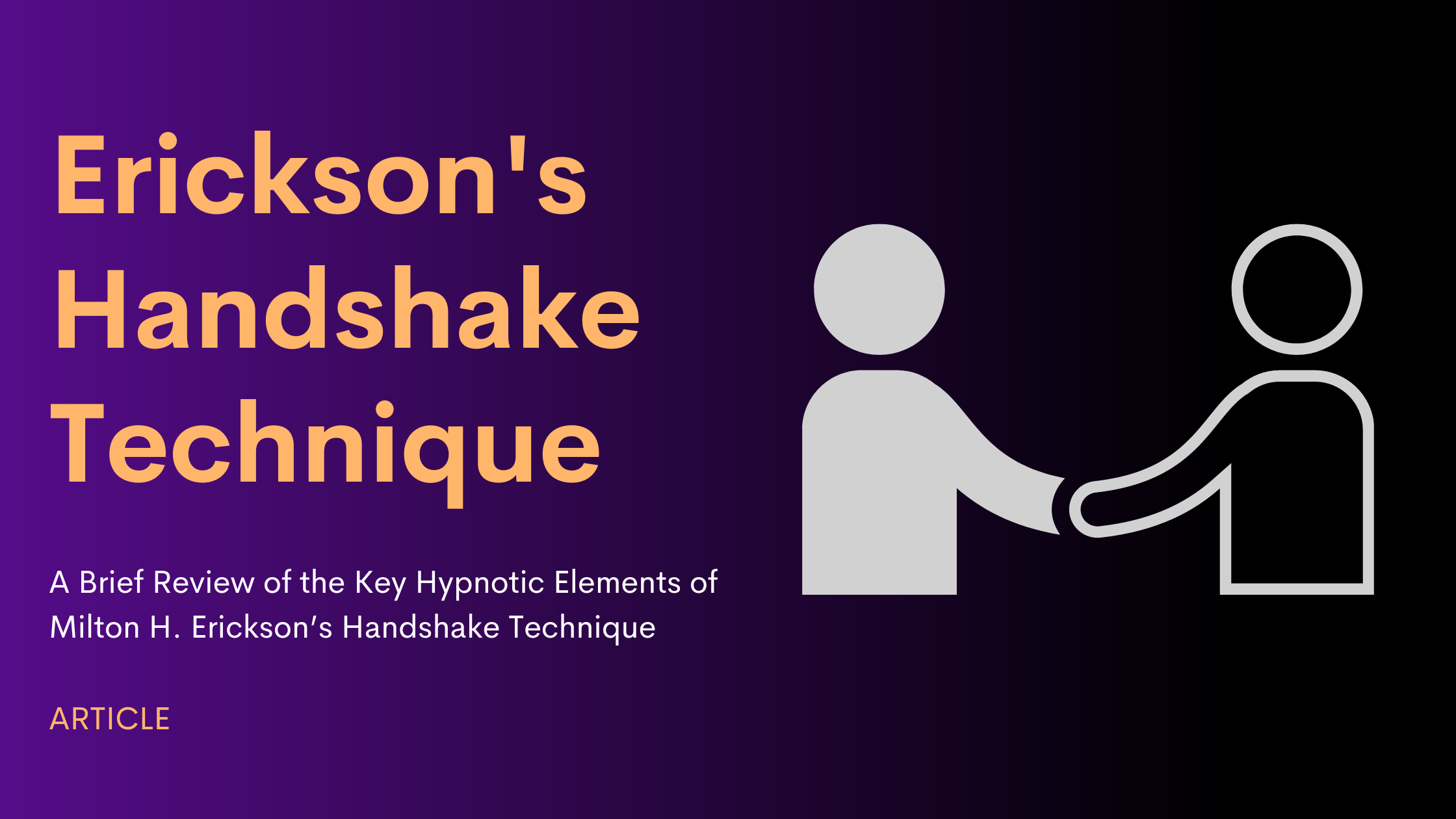
Where storytelling and creative learning come together
The Critical Inner Voice
The critical inner voice is made up of a series of negative thoughts and attitudes toward self and others, which is at the core of a person’s maladaptive behavior. It can be conceptualized as the language of a defensive process that is both hostile and cynical. The voice is not limited to cognition, attitudes, and beliefs; it is also closely associated with varying degrees of anger, sadness, shame, and other primary emotions.
Forgiveness Panel
The following is a transcript of the Forgiveness Panel, one of the highlights of the 2023 Couples Conference. It was edited for readability and is not meant to be shared, cited, or published. The Erickson Foundation provides this transcript to registrants of the 2023 Couples Conference in appreciation of their attendance. I am grateful to Ellyn Bader of the Couples Institute for initiating the panel and suggesting the faculty. - Jeffrey K. Zeig, Ph.D.
Orca Strait
My wife, Jennifer, is not a big traveler, but she has always wanted to go to Alaska to see the wildlife. So in the summer of 2015, we signed up with National Geographic/Lindblad and went for two wonderful weeks. Jennifer is a hospice nurse, and what makes the story interesting is that for many years if you asked her how someday, she would like to die, her answer was that she would like to be eaten by orcas—those magnificent creatures sometimes called “killer whales,”…
Utilization
Milton Erickson was unencumbered by the prevailing orthodoxy of his time. His creativity continues to reverberate profoundly in often unacknowledged ways. Perhaps the most important of Erickson’s principles is utilization. Consider the following vignettes. Erickson saw Kim, a teacher troubled by nude young men hovering just above her head. She told Erickson not to take her young men away, but rather stop their interference with her everyday life.
Erickson’s Handshake Technique
Milton H. Erickson was no doubt a master of masters in inducing hypnotic responses for clinical purposes. Dr. Erickson was instrumental in developing a number of indirect hypnotic techniques and strategies, including interpersonal and nonverbal or pantomime tactics (Erickson, 1958, 1964, 1966; Haley, 1967).
Magical Moments with Milton
The very first time we met with Milton Erickson there were just five people present: Three physicians and the two of us sitting with the awesome Dr. Erickson. A woman walked into the room with her husband. She wanted to be hypnotized so that she could comfortably pass a licensure examination free from the anxiety often generated by such a test.
Four Erickson Cases
Case One: The Right “Spell” My son, Robert, asked me when he was attending grade school, “My two best friends can’t spell; [their papers are] marked 10, 15, or 20, and my spelling [lessons are] marked, 85, 90, or 95. Now, will you teach them how to spell?” I said, “I can’t really do that Robert without consulting their parents…I’ll tell you what to do. You make sure you have your spelling lesson with …
Pain Control
A year ago, while on vacation on Kauai, I picked up a hitchhiker—a young man in his mid-20s who had a full arm cast (palm to shoulder) on his left arm. As we drove along it seemed natural to ask how he was injured. He explained that he worked in construction, and a couple of weeks prior, had fallen toward a window. He broke through the glass, and glass shards badly sliced his arm.
Milton Erickson
This is a picture of Reeseville High School around the time that Milton Erickson was a student there. He graduated in June 1919 at the age of 18. Two months later he had a crippling bout of polio. Unearthed from the Erickson archives, we provide the following to illustrate the socio-cultural perspectives of Erickson. (For additional information: An Epic Life Milton Erickson, Professional Perspectives, and Epic Life II: Milton Erickson, Personal Perspectives, by Jeffrey K. Zeig, Erickson Foundation Press.)
Think Small
It was a stressful moment. A young woman sat before me trying to tell me why she had come in, a matter of vital concern to me. I was a new intern at the counseling center and had to document each client’s presenting issue. In this case, though, I was stymied. After 30 minutes, I had absolutely nothing to write. This woman was clearly grappling with a need to maintain a secret. Every sentence was unintelligible, lacked a noun or verb, and relayed virtually no information. I was getting anxious wondering what my supervisor would think about a chart note that lacked the most basic information.
When Abby Died
Frigid rain peppers hard blackened snow. You continue to season my thoughts. When I saw her in the waiting room last March I knew the lymphoma had recurred. She’d aged. Her shrunken profile barely stirred the air as she walked into my office. Undaunted, she wanted to write more of her memoir. As a Registered Poetry Therapist, I offer healing trances through spontaneous free writing and bibliotherapy, as well as hypnosis.
Tell a Story to a Story
Chapter One Dear Dr. Greenleaf, This is Angela from your class at MRI. I have a situation at home and I wanted to write to you because I sense you may be able to help me deal with it by using a story for the solution. This morning my 3 ½-year-old son walked quietly into my room with his favorite stuffed pink pig and comforting purple blanket. Instead of his normal singing, shouting, and jumping in my bed, he looked tired and sad and crawled under my blanket to cuddle with me. I asked him…
What If We Stopped Fighting Nicotine Addiction?
I begin all my treatments with the question: “What would you like to change today — and why?” The client M.T. answered, “I want to quit smoking because it’s bad for me.” (I find this is a staple answer for most people who are asked the same question.) I normally follow my question with a destabilization technique. This is intended to simultaneously create an increase in motivation to the point where the clients are almost demanding to be treated. It also brings about a state of confusion during…
Dancing With Jennifer, Dancing With Beth
Dr. Jim, a sweet-faced, middle-aged man, arrived, referred for treatment of anxiety by a previous hypnosis patient. When I ask him what form the anxiety takes, he says he is a good doctor with a healthy practice, confident in his skills and in his marriage relationship. He describes his wife, Beth, in loving terms. He wants to please her. His wife had convinced him to take dancing lessons with her so they could enjoy…
What a Storm Called Derecho Brought into My Life
It was Monday, August 10, 2020. The weather began to worsen. It was nearly 2 p.m. in Cedar Rapids, Iowa when strong winds began to bend trees dramatically and the noise got louder and louder. It was time to go downstairs to the basement – a safer place – to wait out the storm. When it finally passed, I went upstairs to survey the damage. It was huge. According to the meteorological service the wind reached 140 mph. I ventured outside to see how the neighbors were doing. People were walking around in awe and disbelief…
Chicken Coop
Milton and Elizabeth Erickson’s professional collaboration didn’t stop with their early papers on time distortion. During Milton’s last seven years, when I was a frequent visitor to the Erickson household and office, Betty was very much involved in all aspects of his work. After I had my first baby and was pregnant with the second, Betty took care of my daughter…
Book Review
The Anatomy of Experiential Impact Through Ericksonian Therapy is one in a trilogy written by Jeffrey Zeig. The other two books in the trilogy — The Induction of Hypnosis (2014), and Psychoaerobics (2015) — emphasize different elements of the psychotherapeutic connection, but I enjoyed The Anatomy of Experiential Impact the most. Each of the three books stand on their own in content but reading them in sequence has greater impact and offers the reader more insight.
An Interview with Jeffrey K. Zeig
Vladimir Zelinka: Could you please talk about the role creativity plays in your therapy?
Jeff Zeig: I am creative in my therapy because I want my patients to be creatively empowered. If you are living creatively, then you are leading a fulfilling life with meaning.
Book Review
Jeffrey Zeig is the Founder and Director of the Milton H. Erickson Foundation. He travels worldwide, teaching, lecturing, supervising, organizing conferences, writing, and working tirelessly to promote Ericksonian hypnosis and psychotherapy. This book is an outgrowth of his profound wisdom about eliciting hypnosis. Zeig humbly states that his book is one more interpretation of Dr. Erickson he hopes will add to the literature.





















